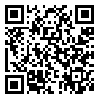BibTeX | RIS | EndNote | Medlars | ProCite | Reference Manager | RefWorks
Send citation to:
URL: http://jdisabilstud.org/article-1-2778-en.html
Background & Objectives: Family members and the complex relationships between them play a vital role in developing children with disabilities. On the other hand, living with a child with a disability can profoundly affect family members. The child with the disability inevitably spends a lot of income, energy and family time. This issue can affect the relationship between spouses with each other, parents with other children, siblings with each other and other relatives. Based on studies, various psychological and social factors affect self–efficacy. Therefore, due to the special conditions in families with children with special needs, the study of quality of life and family efficiency are also very important. How families and their upbringing and community support for families with children with special needs may affect the quality of life of this group of caregivers. Therefore, the present study aimed to determine the relationship between self–efficacy and family efficiency and quality of life in siblings of children with Down syndrome.
Methods: The present study was cross–sectional with an analytical correlational research method. The statistical population of this study included all siblings (with Down syndrome) of students studying in Ahvaz City, Iran in the academic year 2018–2019. To determine the sample size, the number of 300 were estimated based on Krejci and Morgan table (1970); after the drop in subjects, the sample size reached 278 people. The inclusion criteria were as follows: age range 14 to 18 years; lack of mental or physical disability; living with a sibling with a disability; being educated; ability to understand questions. Reluctance to cooperate in the study was considered exclusion criterion. To collect data, the Family Functioning Questionnaire (Epstein et al. 2003), the Self–Efficacy Questionnaire (Muris, 2001), and the Quality of Life Questionnaire (World Health Organization, 1998) were used. To analyze the data, descriptive statistics (mean and standard deviation) and inferential statistics (the Pearson correlation coefficient and multiple linear regression) were used to analyze the data. Data analysis was performed in SPSS software version 24. The significance level was considered 0.05
Results: The results of multiple linear regression analysis showed that family efficiency (β=0.386, p<0.001) and quality of life (β=0.371, p<0.001) significantly predicted self–efficacy. Also, the results of correlation coefficient showed a significant relationship between family efficiency (r=0.556, p<0.001) and quality of life (r=0.367, p<0.001) with self–efficacy.
Conclusion: Based on the findings of this study, family efficiency and quality of life can predict self–efficacy in siblings of children with Down syndrome. Therefore, paying attention to improving family efficiency and quality of life helps improve the self–efficacy of children with Down syndrome.
| Rights and permissions | |
 |
This work is licensed under a Creative Commons Attribution-NonCommercial 4.0 International License. |



